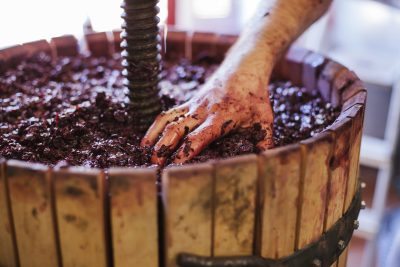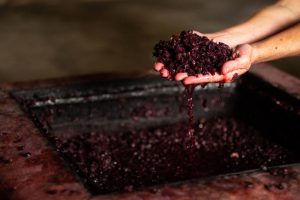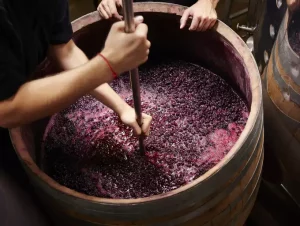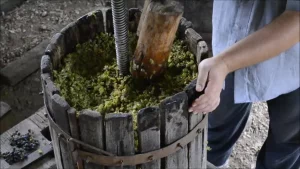Wine is a beloved beverage enjoyed by many, but have you ever wondered what exactly goes into the making of your favourite bottle? One key ingredient that plays a crucial role in the creation of wine is yeast. Yeast is a microorganism that is responsible for the fermentation process that turns grape juice into wine. But does wine have yeast?
Yes, wine is made by fermenting grapes using yeast. Yeast converts the sugars present in grapes into alcohol and carbon dioxide. Different types of yeast can be used to produce different styles of wine, and the yeast can also affect the wine’s flavor and aroma.
Also, yeast is a vital component of the wine-making process; without yeast, the wine will not ferment and will not have any alcohol content. Some wineries use specific yeast strains to influence the final product and create a unique flavor profile. The yeast is responsible for giving the wine its characteristic alcohol content and taste.
Is yeast present in wine during fermentation?
Yes, yeast is present in wine during fermentation. Fermentation is the process by which yeast converts the sugars in grapes into alcohol and carbon dioxide. Yeast is a microorganism that is naturally present on the skin of grapes and in the environment.
When grapes are crushed, and the juice is extracted, the yeast comes into contact with the sugar present in the grapes and begins to ferment it.
So, during the fermentation process, the yeast consumes the sugar and produces alcohol and carbon dioxide as byproducts. The alcohol content of the wine increases as the yeast continues to consume sugar, and carbon dioxide is released into the air.
The yeast also produces various byproducts, such as esters and higher alcohols, that contribute to the aroma and flavor of the wine.
Once the fermentation process is complete, most of the yeast will settle to the bottom of the fermentation vessel, creating a sediment called “lees.” In some styles of wine, this sediment is removed, while in others, it is left in the wine and can contribute to the wine’s flavor and texture.
Generally, yeast is present in wine during fermentation, and it plays an important role in the production of alcohol and the development of flavors and aromas. Without yeast, the grapes would not ferment, and wine would not be possible.
Can yeast be found in all types of wine?
Yes, yeast can be found in all types of wine as it is a vital component of the wine-making process. Yeast is used to ferment grapes and turns them into wine. Yeast is a microorganism that is naturally present on the skin of grapes and in the environment.
When grapes are crushed, and the juice is extracted, the yeast comes into contact with the sugar present in the grapes and begins to ferment it.
Also, different types of yeast can be used to ferment grapes, and each type can produce unique flavors and aromas in the wine. For example, some yeasts are known for producing fruity or floral flavors, while others may produce more earthy or spicy flavors.
The type of yeast that is used can depend on the specific wine-making technique and the winemaker’s preference. Additionally, the conditions under which the yeast ferments the grapes, such as the temperature and the presence of oxygen, can also affect the final flavor and aroma of the wine.
Furthermore, yeast is present in all types of wine, and it plays an important role in the production of alcohol and the development of flavors and aromas. The specific type of yeast used and the conditions under which the grapes are fermented can affect the final wine’s characteristics.
How does yeast affect the taste of wine?
Yeast plays a significant role in determining the taste of wine. Yeast is a microorganism that ferments the sugars in grapes, converting them into alcohol and carbon dioxide. The specific type of yeast used, as well as the conditions under which the grapes are fermented, can affect the final flavor and aroma of the wine.
Different types of yeast can produce different flavors and aromas in the wine. For example, some yeasts are known for producing fruity or floral flavors, while others may produce more earthy or spicy flavors. Additionally, the conditions under which the yeast ferments the grapes, such as the temperature and the presence of oxygen, can also affect the final flavor and aroma of the wine.
During fermentation, yeast produces a wide range of byproducts, such as esters and higher alcohols, that contribute to the aroma and flavor of the wine. Esters are organic compounds that give the wine its fruity flavors, such as apple, banana, or pear. Higher alcohols, such as fusel alcohols, can contribute to the wine’s aroma and flavor, providing a spicy or hot sensation.
The yeast also produces other byproducts like diacetyl, which is a compound that gives the wine a buttery or creamy flavor, and acetaldehyde, which can give the wine a nutty or apple-like flavor.
What role does yeast play in the wine-making process?
Yeast plays a vital role in the wine-making process. Yeast is a microorganism that ferments the sugars in grapes, converting them into alcohol and carbon dioxide.
The process of fermentation is essential to the production of wine, as it is responsible for creating the alcohol content and developing the flavors and aromas that are characteristic of wine.
During fermentation, yeast consumes the sugar present in the grapes and produces alcohol and carbon dioxide as byproducts. The alcohol content of the wine increases as the yeast continues to consume sugar, and carbon dioxide is released into the air. The yeast also produces various byproducts, such as esters and higher alcohols, that contribute to the aroma and flavor of the wine.
Yeast also plays an important role in determining the final alcohol content of the wine. The amount of yeast used and the conditions under which the grapes are fermented can affect the final alcohol content. For example, warm temperatures and ample oxygen can lead to faster and more vigorous fermentation, which can result in higher alcohol content.
Once the fermentation process is complete, most of the yeast will settle to the bottom of the fermentation vessel, creating a sediment called “lees.” In some styles of wine, this sediment is removed, while in others, it is left in the wine and can contribute to the wine’s flavor and texture.
In addition, yeast plays a vital role in the wine-making process by fermenting the grapes and producing alcohol and various byproducts that contribute to the aroma and flavor of the wine, and also yeast is responsible for determining the final alcohol content of the wine. Without yeast, the grapes would not ferment, and wine would not be possible.
How does yeast convert sugar to alcohol in wine?
Yeast converts sugar to alcohol in wine through a process called alcoholic fermentation. Yeast is a microorganism that contains enzymes that can break down sugars, such as glucose and fructose, into alcohol (ethanol) and carbon dioxide (CO2).
During alcoholic fermentation, the yeast consumes the sugar in the grapes and begins to produce ethanol and CO2.
The process of fermentation begins when yeast comes into contact with sugar and it starts to consume it, the yeast cells then go through a series of metabolic reactions that convert the sugar into ethanol and CO2. The ethanol is what gives a wine its alcohol content, while the CO2 is released into the air.
The process of alcoholic fermentation can be broken down into two main stages:
- Glycolysis: In this stage, the yeast breaks down the sugar molecules into simpler molecules, such as pyruvate, by using enzymes.
- Ethanol Production: In this stage, the pyruvate is then converted into ethanol and CO2 by the enzyme pyruvate decarboxylase.
The rate of fermentation is determined by the amount of yeast present, the temperature, the sugar content, and the presence of oxygen. This process can take several weeks to several months, depending on the type of wine being made and the conditions under which the fermentation is taking place.
Can you make wine without yeast?
Wine can be made without yeast, but it would be a different process, and the final product would be quite different. Yeast is a microorganism that is responsible for converting the sugars in grapes into alcohol and carbon dioxide. Without yeast, the grapes would not ferment, and wine would not be possible.
Winemakers have traditionally used wild yeasts that are naturally present on the grapes, but today many winemakers use commercially cultured yeast strains that have been selected for their ability to ferment efficiently, produce desirable flavors, and their resistance to spoilage.
However, it is possible to make wine without the use of added yeast. This process is called “spontaneous fermentation” or “wild fermentation,” where grapes are left to ferment naturally, with the yeasts that are already present on the grape’s skin or in the environment.
This process can lead to a wine that is more complex and has more unique characteristics. However, it is also more unpredictable and can lead to spoilage.
Another way is to make wine without yeast by using other microorganisms, such as bacteria, which can convert the sugars in grapes into alcohol through a process called malolactic fermentation. This process is typically used to soften the acidity and add a creamy or buttery flavor to the wine, but it does not produce a significant amount of alcohol.
In addition, while yeast plays a vital role in the wine-making process by converting the sugars in grapes into alcohol, it is possible to make wine without added yeast by using spontaneous fermentation, wild fermentation, or malolactic fermentation. But the final product would be different in taste and alcohol content.
What are the different types of yeast used in wine making?
There are several types of yeast used in wine making, including:
- Saccharomyces cerevisiae: This is the most commonly used yeast for wine fermentation, known for producing fruity and floral aromas.
- Saccharomyces bayanus: This yeast is also used for wine fermentation, known for producing a more neutral aroma.
- Saccharomyces carlsbergensis: This yeast is known for producing a crisp and refreshing wine, often used for sparkling wines.
- Saccharomyces pastorianus: This is a hybrid yeast, a cross between Saccharomyces cerevisiae and Saccharomyces bayanus, known for producing a complex flavor profile.
- Non-Saccharomyces yeasts: This includes Brettanomyces, Pediococcus, Lactobacillus, and other non-Saccharomyces yeasts, which can be used as a secondary fermentation or to add complexity and distinct character to the wine.
- Wild yeasts: These are yeasts that are naturally present on grape skins, in the air, and in the winery, can also be used for fermentation, but their use is rare.
How does the type of yeast use affect the final wine?
The type of yeast used in wine fermentation can greatly affect the final wine. Each yeast strain has its own unique characteristics, including its ability to ferment certain sugars, produce certain flavors and aromas, and tolerate certain levels of alcohol and acidity.
For example, yeasts that produce fruity and floral aromas, such as Saccharomyces cerevisiae, can contribute to a wine’s aroma and flavor profile. Yeasts that can ferment a wider range of sugars, such as Saccharomyces bayanus, can result in a higher alcohol content and a dryer wine.
Yeasts that can tolerate high levels of alcohol, such as Saccharomyces pastorianus, can result in a wine with a higher alcohol content. Additionally, the use of non-Saccharomyces yeasts such as Brettanomyces can add complexity and distinct character to the wine, and wild yeasts can add a sense of terroir or a sense of place to the final product.
Furthermore, the type of yeast used in wine fermentation can greatly affect the final wine and can be used to create the desired flavor, aroma, and alcohol content.
Can yeast survive in finished wine?
Yeast can survive in the finished wine, but the population of yeast will decrease as the alcohol content increases and the level of residual sugar decreases. Yeast can survive in wine that has an alcohol content of up to 14-15%, but above this level, most of the yeast will die off.
Also, once the fermentation process is completed and all the available sugars have been consumed, the yeast will start to die off. Some yeast may remain in the wine, but they will be in low numbers and will not be active.
However, in some cases, winemakers may choose to add yeast to the finished wine, particularly in the case of sparkling wines, where secondary fermentation is needed to produce the bubbles. In this case, the added yeast will be active and will ferment any remaining sugars, increasing the alcohol content and carbonation of the wine.
So, Yeast can survive in the finished wine, but it’s not active and not in high numbers, and depending on the wine style and winemaking process, winemakers may choose to add yeast to a finished wine to produce a desired outcome.
How do winemakers control the yeast population in wine?
Winemakers have several ways to control the yeast population in wine. These include:
- Yeast Selection: Winemakers can carefully select the type of yeast they want to use for fermentation. Different yeast strains have different characteristics and can produce different flavors and aromas. By selecting the right yeast strain, winemakers can control the final outcome of the wine.
- Temperature Control: Yeast is sensitive to temperature, and different strains of yeast perform best at different temperatures. By controlling the temperature during fermentation, winemakers can control the yeast population and ensure optimal fermentation.
- Nutrient Addition: Yeast requires certain nutrients to grow and reproduce. By adding the right nutrients at the right time, winemakers can control the yeast population and ensure optimal fermentation.
- pH Control: Yeast is sensitive to pH, and different strains of yeast perform best at different pH levels. By controlling the pH during fermentation, winemakers can control the yeast population and ensure optimal fermentation.
- Sterilization: Winemakers can use sterilization methods to kill off any unwanted yeasts or bacteria before fermentation. This can be done by using chemicals or heat.
- Malolactic fermentation: This is a secondary fermentation that is done after alcoholic fermentation, which is done by bacteria called Oenococcus oeni. This process can help to stabilize the wine and prevent spoilage.
Overall, winemakers use a combination of methods to control the yeast population in wine, and the process is carefully monitored throughout fermentation to ensure the optimal outcome.
Can wild yeast be used to make wine?
Yes, wild yeast can be used to make wine. In fact, many traditional winemakers rely on wild yeast for fermentation rather than commercially cultured yeast. Wild yeast is naturally present in the grape skins and in the winery environment and can be introduced to the must (juice and crushed grapes) through natural fermentation.
This process is known as spontaneous fermentation or natural fermentation. Wild yeast can produce unique and complex flavors and aromas in the wine, but it also comes with some risks, such as spoilage, uneven fermentation, and low alcohol content.
Therefore, wine makers who use wild yeast will often monitor the fermentation closely and make adjustments as needed to ensure a successful fermentation.
Can yeast spoil wine?
Yes, yeast can spoil wine if it is not properly controlled. The process of fermentation is carried out by yeast converting sugars in the grapes into alcohol and carbon dioxide. However, if the conditions for fermentation are not ideal, other microorganisms, such as bacteria, can also grow and spoil the wine.
Some common issues that can arise during fermentation include:
- High levels of volatile acidity (VA) can produce off-flavors and aromas such as acetic acid (vinegar) or ethyl acetate (nail polish remover).
- Low alcohol content, which can leave the wine sweet and unbalanced.
- Harsh tannins can make the wine astringent and bitter.
- Unpleasant flavors and aromas, such as sulfur compounds, can give the wine a “reductive” or “reductive” character.
To prevent spoilage, winemakers need to monitor and control the fermentation process closely, ensuring that the yeast is healthy and the fermentation is proceeding at the right temperature and rate. Winemakers can also take steps to prevent spoilage by keeping the winery environment clean and sanitized and by adding preservatives to the wine.
Recommended:
Conclusion
If you want to learn more about wine and one question you need an answer to is, does wine have yeast? I am glad to let you know that you are just in the right place. Wine is a fermented beverage that is produced by the action of yeast on grapes.
Yeast, a type of fungus, consumes the natural sugars in grapes and converts them into alcohol and carbon dioxide. The presence of yeast in wine is essential for the fermentation process, and without it, wine could not be produced. Therefore, it can be said that wine does have yeast.




